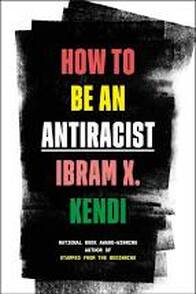 Chapter 9 - Color Colorism: A powerful collection of racist policies that lead to inequities between Light people and Dark people, supported by racist ideas about Light and Dark people. Color Antiracism: A powerful collection of antiracist policies that lead to equity between Light people and Dark people, supported by antiracist ideas about Light and Dark people. To be antiracist is to focus on color lines as much as racial lines. pg. 110 To be an antiracist is not to reverse the beauty standard. To be antiracist is to eliminate any beauty standard based on skin and eye color, hair texture, facial and bodily features shared by groups. - pg. 114 Self-Examination. Are my interactions different depending on the lightness or darkness of skin color? What is my body language doing that gives off my inner thinking? Being an antiracist is not a show that I am acting. These questions are not to conceal but to call out. Knowing and believing no race or color is superior needs to be demonstrated in body language and within interactions. I need to be real and reevaluate myself if assumptions are made before I cause harm.
0 Comments
Leave a Reply. |
Mr. Dylan Wince
|

 RSS Feed
RSS Feed